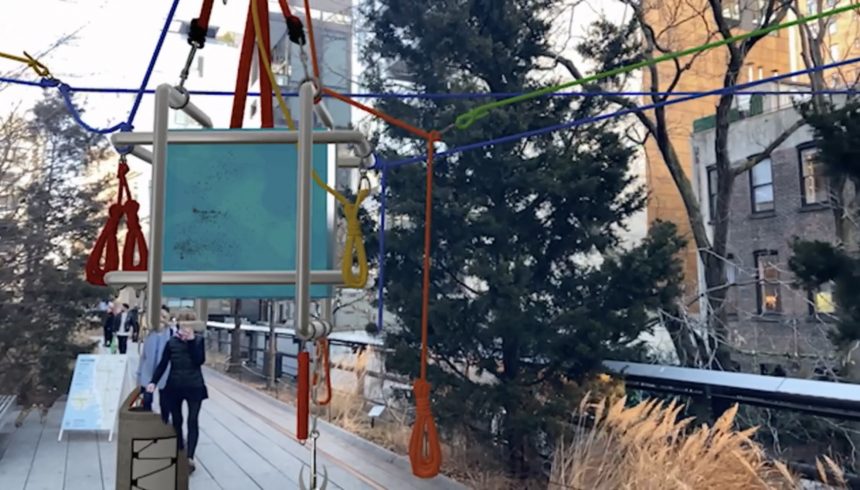The global Augmented Reality Market size is growing at a CAGR (Compound annual growth rate) of 27.6% during 2020-2026. This increase is huge, which means it’s “trending” as they say, meaning if you aren’t thinking about “now” solutions for AR then you’re very behind.
The market for AR technology is growing, with projections for 2023 valuing it at over 18 billion U.S. dollars. What will your art business, museum/foundation, advisory, et cetera, be doing with AR and for what purpose?
Other sources include, as per reports, “AR is expected to become a [worldwide] $ 100 billion industry [back in] in 2020. In fact, many are expecting AR to lead the consumer industry, with AR products like headsets and apps getting popular, too.” (Source)
Currently we see Facebook evolving into what is now Meta, taking a huge dive into augmented reality (AR) and virtual reality (VR), as well as blockchain technologies with the inclusion of NFTs.
And although there is such large growth, WHY ISN’T THE ART WORLD EMBRACING AR FULLY?
LACMA already has a collaboration with Snapchat to engage a particular demographic, but how do we leverage the demographic of the collector?
The MET is even participating, but no one else?
Perhaps it’s too technical for most art institutions and businesses. A web-search can provide a lot of resources, with no direction and a very unclear answer to one of the questions commonly asked; How could I leverage AR for my art?
Almost appropriately AR assets are being sold as NFTs. Innovation meets other forms of innovation, and so far only select auction houses, a handful of galleries participate, however the majority are artists directly launching their own NFT artwork sales.
Some believe Augmented Reality Can Revolutionize the Art World:
Quote One:
“Once or twice every century, a new visual technology appears that changes what art can be. Writer Douglas Coupland says that the introduction of VR and AR represents a shift comparable to the introduction of TV or even electricity. When a new artistic medium emerges, there is always this window of experimentation—a period of confusion and exaggeration perhaps, when things are not defined yet. Sometimes, that period is the most interesting from an artistic point of view…”
Another excerpt:
“The idea that today’s reactions to the virus represent a kind of dress rehearsal for the climate crisis is a recurring theme in the discourse surrounding the pandemic. Some museums have declared a climate emergency, but so far it remains unclear what the call for radical change could imply beyond the museum doing less of exactly that which made the institution attractive in the first place. I wonder if these new visual possibilities will change the function of the museum?”
Lastly:
“Perhaps what we need are hybrid spaces made possible when physical locations are connected virtually? Thousands of people flying to another continent for a weekend to buy and sell art that also has been transported there by air may no longer seem like the ideal mode of exchange.”
AR could provide access to artworks in museums and fair events, gallery exhibitions for people that can’t go, live across the planet or have no means to view but now EVERYONE can. Opens up the doors to “trying on” and “experiencing” artworks for sale during gallery exhibitions, art fairs, or museum showcases.
AR is the future of selling art. Even Kaws participated.
“KAWS develops augmented reality project that offers a different model for the future of showing and selling art. As coronavirus forces people into lockdown, art lovers are turning to social media to share their experiences”
The point is that AR has reached some penetration, but there are only a few companies that offer proper AR services.
Vortic AR, which is app-based, requiring download is not so compatible and is very expensive. Their focus appears to be virtual reality (VR). (https://vorticxr.com/)
Acute Art App also makes you download an app which can make sharing difficult and reduce participation, however they have worked with well-known artists. Not a platform to reach the masses, but fun. (https://acuteart.com/)
Hue Live is web-based using only a browser and works across all mobile devices and focuses on the sales-side usage of AR. The platform offers analytics for each artwork such as viewed, engaged with, and even conversion rates. (https://hue.live/)
The Art Market Co. uses AR software, powered by us at HUE, as well as a newsletter-type showcasing of gallery exhibitions using 3-D conversions of real-life artworks for sale. (https://theartmarket.co/)
“We all, Brian included, see this as a natural progression of where the art world is headed,” says Jacob De Geer, the chief executive of Acute Art. “People don’t want to travel, people want to be greener. It’s also about taking pictures and sharing them. For a generation that is raised, as we all are nowadays, looking at the world through social media, through handsets, it’s completely natural.”
AR is the best way to visualize artworks remotely for collectors, art lovers, those in education and many more applications.
VR is still popular, but from a user experience standpoint it still feels like the “old way of doing things.” On the other hand if experienced without a headset that everyone can enjoy on their phone or desktop then that has much better application. Headsets are still expensive and not useful.
Since corona the model has changed to virtual, but AR is the stronger of the two.
Best use-case we see is AR for:
1. Experiencing artworks from a public art standpoint (Acute Art, Vortic, HUE)
2. Increase Art Sales, for example using AR for collectors to view artworks in your space, if you’re a collector, for purchase. (HUE @ www.hue.live, The Art Market Co.)
3. Sparking creativity in traditional artists while bringing awareness to other digital artists.



Leave a Reply